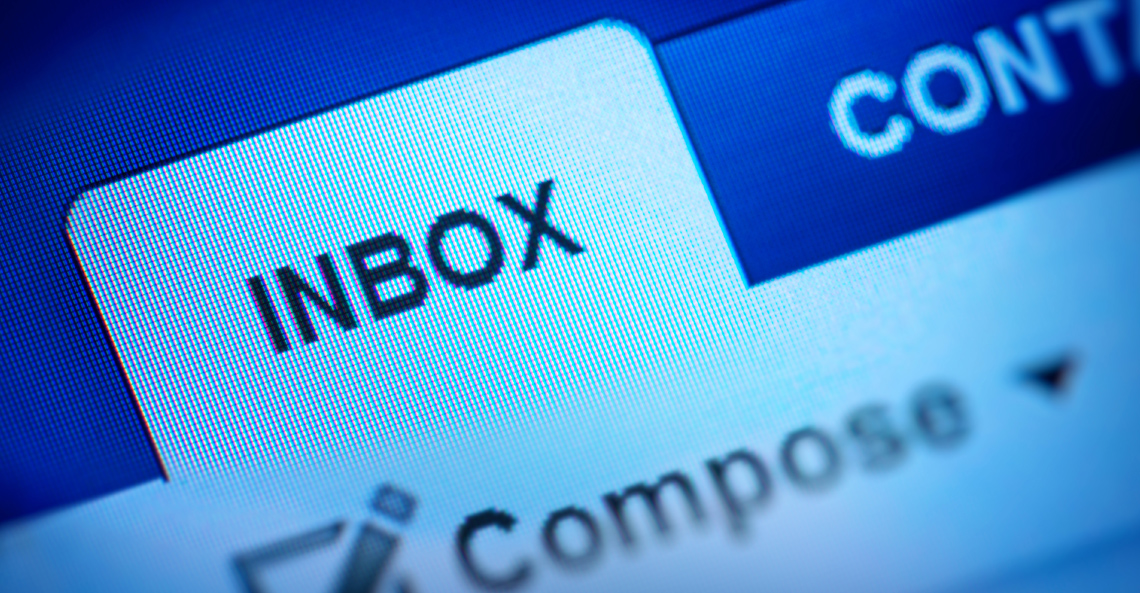
Email etiquette for businesses: 5 rules
Businesses use email. It’s a fact. Not only do they send internal and external daily emails, but a lot of businesses are sending emails to their market as part of their direct marketing strategies. Needless to say, there are thousands of emails flying through digital space. So there are some email etiquette rules that should be adhered to, otherwise chaos results. You don’t have to have a Masters degree in English, as these rules are fairly easy to follow, but you should work at becoming a master of one of the most used business communication tools.
5 email etiquette rules
1. Don’t punctuate unnecessarily
Punctuation is there to punctuate your content, not completely puncture it. Using ten exclamation marks in a row is unprofessional. You wouldn’t put more than one comma or full stop, would you? On that note, an ellipsis is only three dots (not a dotted frenzy worming its way across a whole line of text), and it is used to indicate an omission of words. For example, if you are quoting someone you may leave out part of the full speech text. You also only need one question mark – adding more that one doesn’t make it any more or less a question. So ease up on those punctuation marks. Even though they are not words themselves, they still communicate something to your readers. Make sure they are there to help your readers, not confuse them.
2. Limit slang, jargon and abbreviations
Strive to be clear and professional in your emails. An email is not a text message, so take the time to avoid shorthand and complete your words and sentences. Keep your reader in mind – don’t flood them with slang, jargon and abbreviations they will unlikely understand.
3. Use the subject line wisely
People receive a lot of emails, so give them a helping hand by being as specific as possible about what your email is about. Writing “Hello” is not helpful at all. Writing the whole content of your email in your subject line is also not helpful.
4. Respond timeously
Communication only truly takes place when it is a two-way flow of information and each party acknowledges receipt of messages received. Politely respond to the emails you receive, particularly if they are addressed to you only. Address the sender courteously and professionally – “Howzit bru” is not an ideal salutation for a business email. If you receive an email that makes you flustered or angry then it’s best to cool down before sending a response you will later regret. If you don’t have time to provide a complete response then take a moment to let the sender know you have indeed received the email and will respond appropriately as soon as you are able to. Your response should be complete – address all issues and answer any questions. There is nothing worse than sending an email to someone asking them a few key questions and they don’t provide any answers.
5. Read your email
Do not send your email before reading it. “But it is for the recipient to read,” you may say, but it is absolutely fundamental that you proofread your email and put yourself in your reader’s shoes. Reading it out aloud is a great way to ensure your email will make sense to them. Have you conducted a spelling and grammar check? Have you addressed what you said you would address? Have you answered all the questions? Have you attached what you said you would attach? Edit your email. Your reader’s time is precious, so cut out your long-winded descriptions of your day at the office and philosophical thoughts on non-associated topics. It’s best to stay focussed on the main points.
Share this with everyone at your business as these five email etiquette rules will help you and your team maintain a professional reputation. If you want to go into more detail, check out HubSpot’s 56 email etiquette tips.



This Post Has 0 Comments